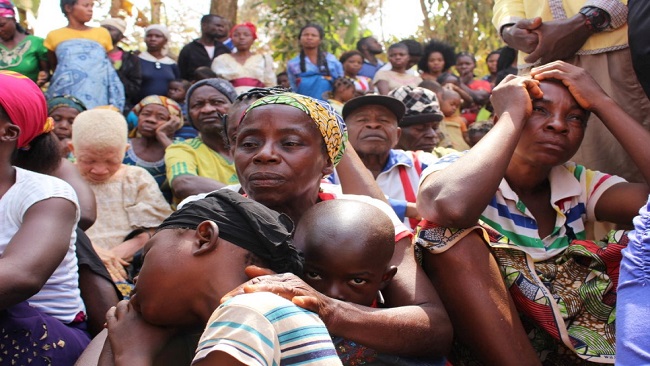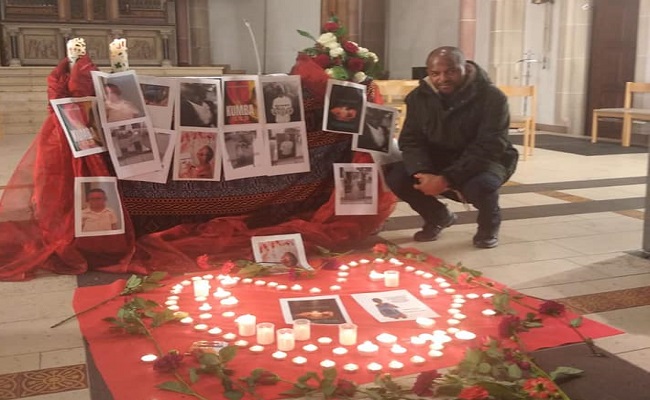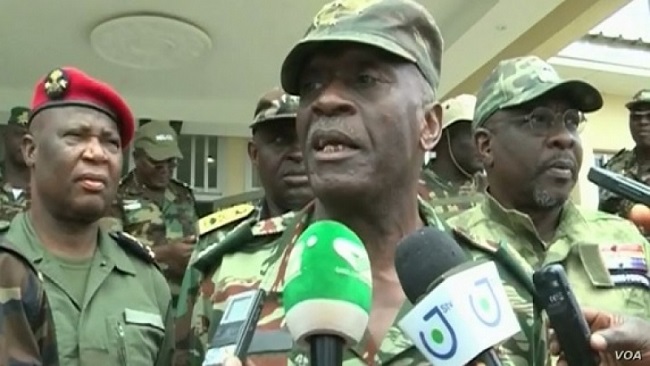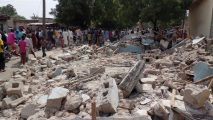27, September 2018
Menchum County: Prison attacked by armed men, about 70 inmates escape 0
Separatists in Cameroon’s restive English speaking regions staged a prison break leading to the escape of about 70 prisoners, the BBC reported on Wednesday.
The incident took place in Wum, a town located north of the regional capital Bamenda. Witnesses say the preceding the prison break was exchange of gunfire at the town’s prison lasting several hours.
They added that the mastermind of the attack sustained gunshot wounds but was carried away by members of his team.
This becomes the second such incident in under two months. In late July 2018, over 160 inmates in the Ndop prisons were released after an attack by separatists.
The attackers who “fired from everywhere”, were able to “break the gates of the prison” before “setting fire to all the buildings,”he added, …
At the time, William Benedict Emvoutu Mbita, head of the department of Ngoketunjia where Ndop is located confirmed that some escapees had voluntarily returned and were due to be transferred to the regional capital, Bamenda.
The attackers who “fired from everywhere”, were able to “break the gates of the prison” before “setting fire to all the buildings,“he added, stressing that they had brought fuel to cause the fire.
Armed separatists since October last year have faced off with state security forces in an increasingly deteriorating security situation in the Anglophone regions – the North-West and South-West.
Source: Africa News



























27, September 2018
How BBC exposed killing of women, children by Cameroon Army using Google Earth 0
A video emerged earlier this year, showing some armed men in uniform brutally killing a group of women and children, and triggered uproar across the globe. It was alleged that the video, released by Channel 4, showed killing of civilians by Cameroon’s army over alleged links with dreaded terrorist group Boko Haram.
The Cameroon government denied the claim, saying that the video was not shot in the country and that the Army was being wrongly blamed for killing civilians. A statement was released by Cameroon Minister of Communication, Issa Tchiroma Bakary, to deny the claims.
“The video that is currently going round is nothing but an unfortunate attempt to distort actual facts and intoxicate the public. Its sincerity can be easily questioned,” Bakary had said in his statement. While the statement came in July 2018, the government a month later said that seven members of the military were facing investigation.
BBC, however, decided to carry out a fact check of the video and the claims and counter claims around it. And the media group did so with the help of Google Earth. It based its investigation on three points – where exactly did it happen, when did it happen, and who is responsible for the atrocities. The BBC released its findings in a video titled ‘Cameroon: Anatomy of a killing’.
Where:
The first 40 seconds of the video captures a mountain range with a distinctive profile. BBC journalists spent hours to match the range with the topography of northern Cameroon, but it failed to give desired result. After a tip off from a source, they studied the topography of a particular region and discovered that the range was near a village named Krawa Mafa, few hundred meters away from the Nigerian border. Other details in the video, such as houses and dirt tracks, were matched with the topography of the village and found to be same.
When:
This was the trickiest part of the investigation done by BBC journalists. Several bits and pieces were put together to identify the range of period when the civilians were killed. A building was visible on the satellite imagery but only till 2016, which suggested that the killings took place before that period. Another building was spotted to have come up in March 2015. Then, a path was traced which appeared only between January and July. The journalists also analysed the shadow of walking assailants on basis of concept of sun dial. After the whole analysis, it was confirmed that the killings took place between March 20 and April 5, 2015.
Who:
The statement released by Cameroonian Minister of Communication Issa Tchiroma Bakary was used for this purpose. For instance, the minister in his statement claimed that the weapons in the video were not the ones used by the Cameroonian Army, but BBC analysis showed that one of the guns used was Serbian made Zastava M21, which is used by some sections of the country’s military. The minister also claimed that the dress worn by the assailants was one used for operations in forests. Bakary claimed that the soldiers in the said area wore desert-style uniform. But Cameroonian soldiers in the region in a Channel 4 video of 2015 were seen wearing forest-style camouflage, similar to those seen in the video.
The focus then shifted to a statement released by the government in August 2018, which named seven soldiers who were arrested and under investigation. The names mentioned in the video, such as Corporal Tchotcho, were matched with some Facebook profiles. A profile of Tchotcho Cyriaque Bityala, who was among the detainees named by the government. Two other soldiers, named in the government list, were identified in a similar manner.
The findings were shared by BBC with the Cameroonian government. Responding to it, the Bakary said, “Seven soldiers were arrested, disarmed. They are under investigation right now. I can confirm that all seven of them are in prison.”
Culled from ZeeNews